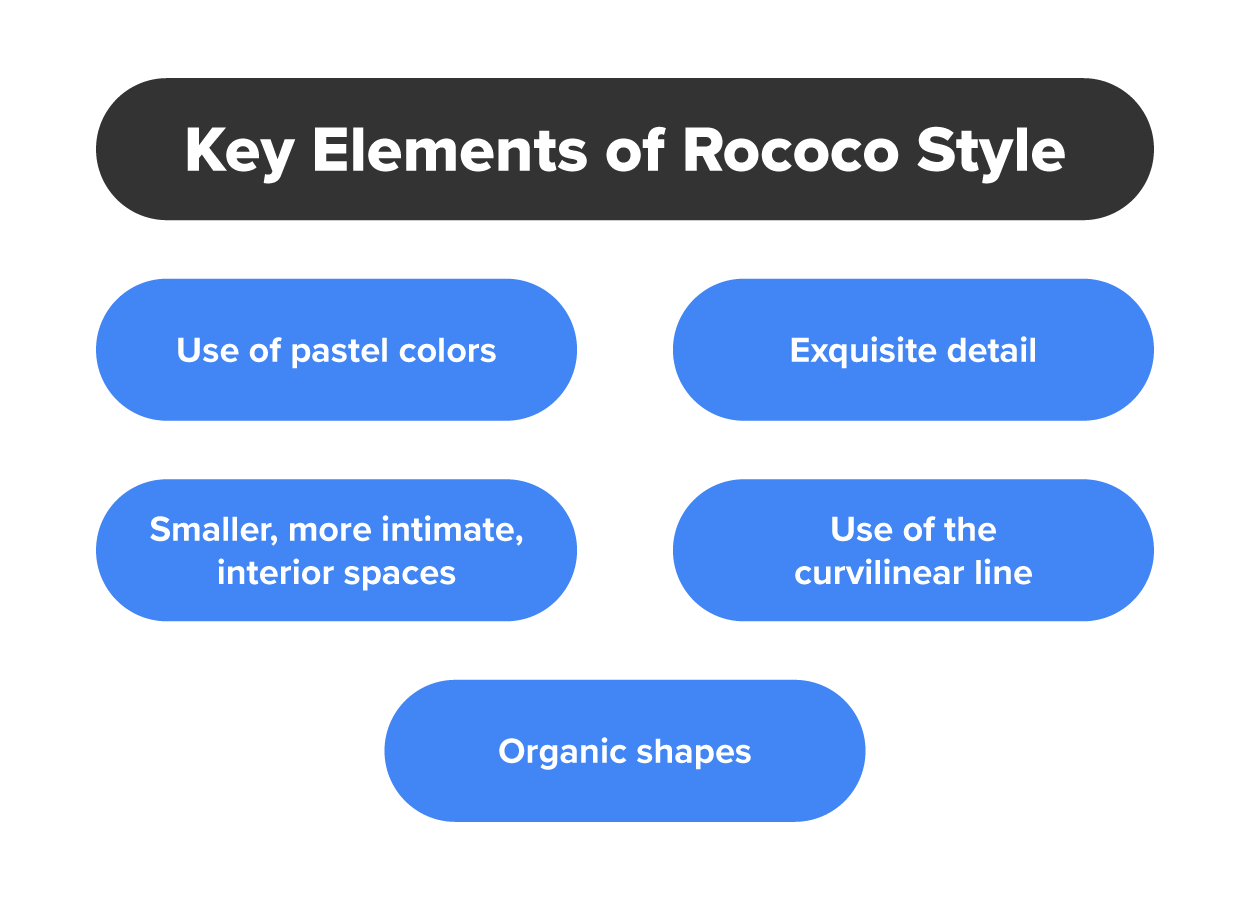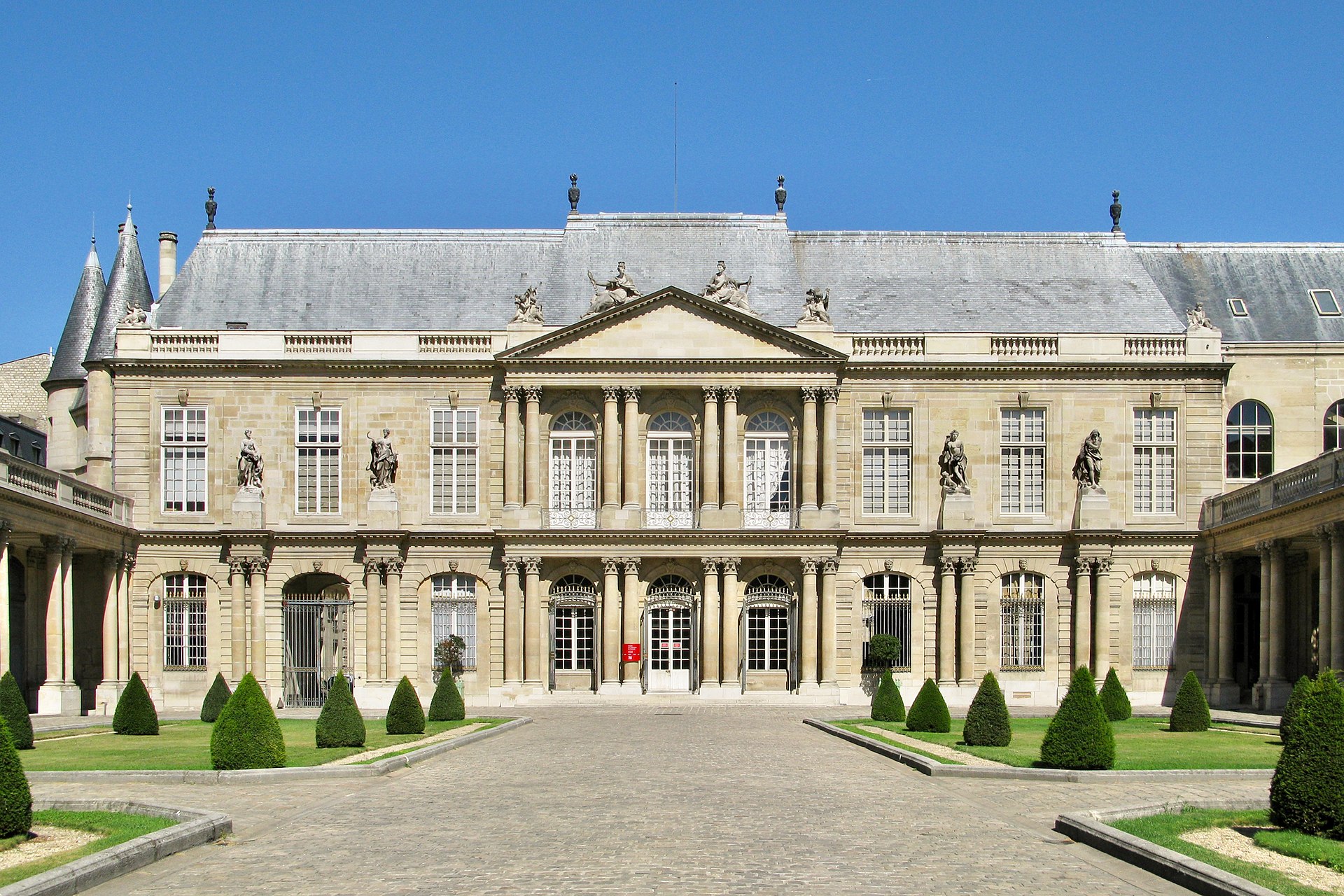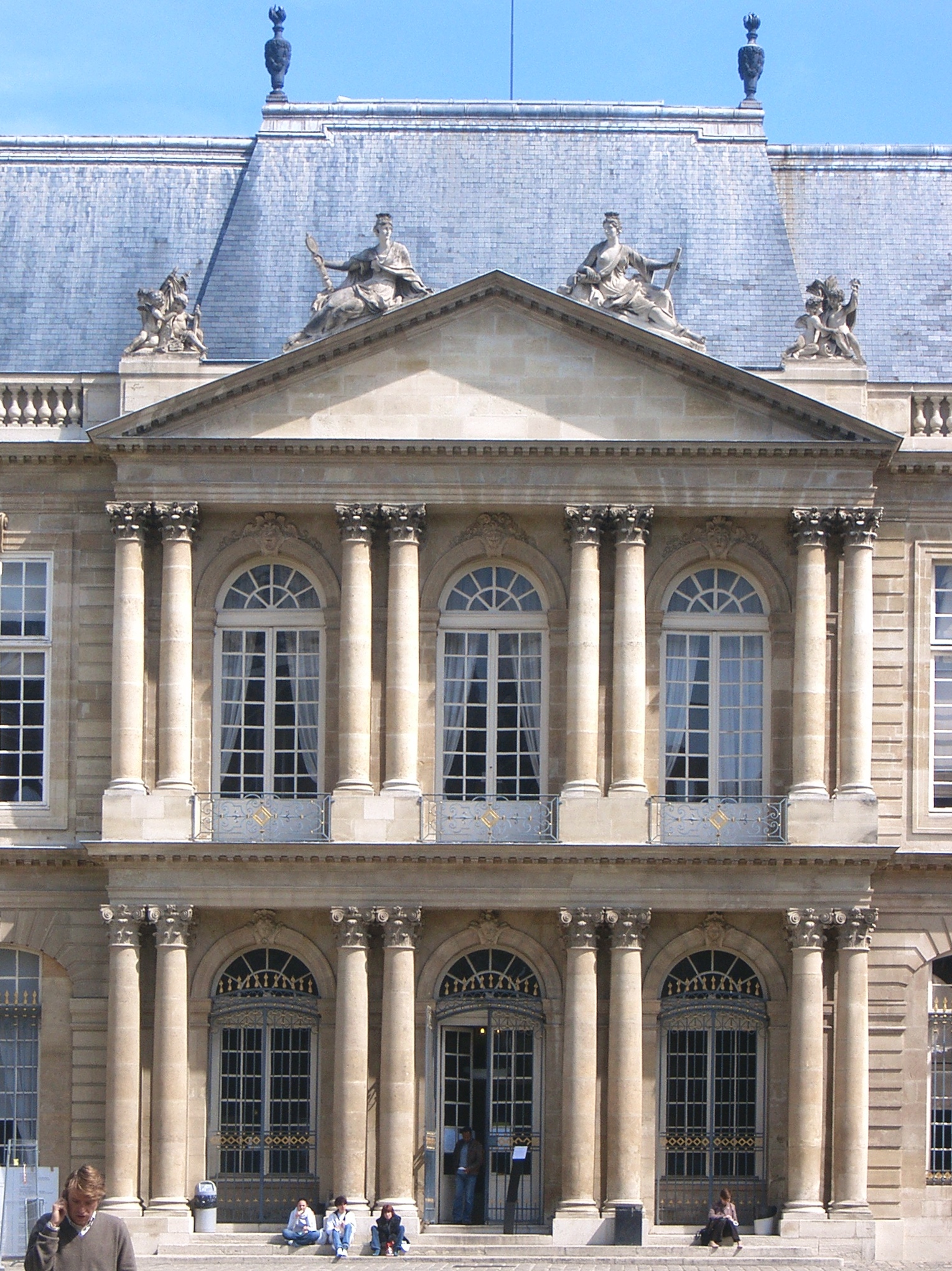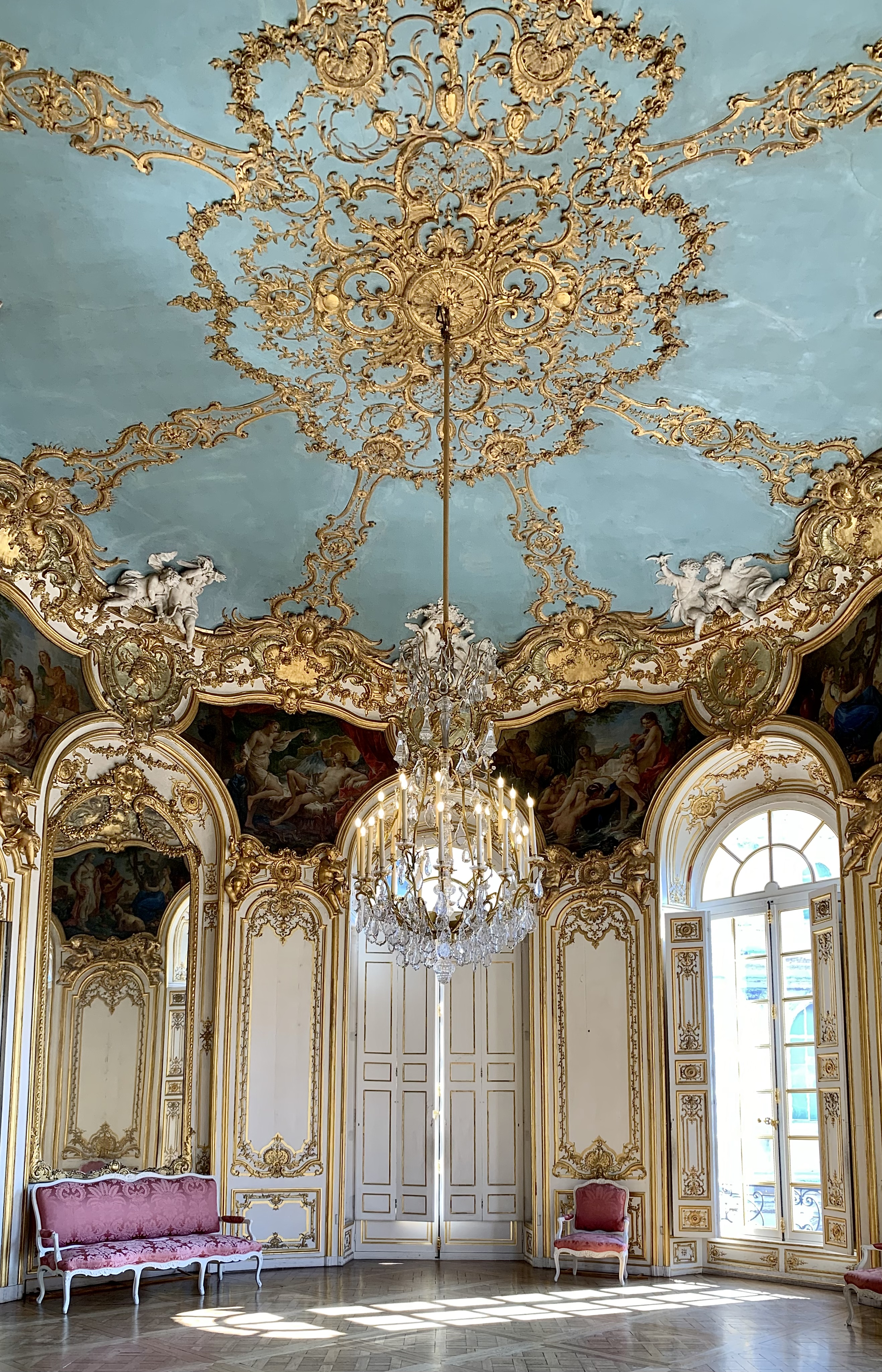Table of Contents |
Rococo, or late Baroque, as it’s sometimes known, was a movement that began in Paris, France, during the early part of the 18th century. It began as an interior design movement as a reaction against the more formal and geometric style of Louis XIV.
The term “Rococo” originates from the French word “rocaille,” meaning a small pebble, symbolizing the use of the pebble and shell decorative motifs that are central to the Rococo style. This artistic movement, which flourished in the early 18th century, is characterized by its ornate and decorative aesthetics. Here are the key stylistic characteristics of Rococo:

The Rococo style’s air of frivolity and opulence is often seen as a reflection of the declining power and detachment of the aristocracy. This extravagance, characterized by its ornate details and luxurious aesthetic, highlighted the stark contrast between the lives of the aristocracy and the common people. As the nobility continued to indulge in their lavish lifestyles, this contributed to growing public resentment toward their excesses.
Sophistication and refinement were the height of fashion among the nobility during the Rococo era, manifesting not only in visual arts but also in theater, music, literature, and even in daily conversation. The salon, an intellectual gathering where ideas were exchanged, became the ultimate public expression of elegance and intellectual refinement.
Salons, therefore, became cultural hubs where artists, writers, philosophers, and other intellectuals would come together to discuss and debate. The intimate setting of these salons allowed for more personal and engaging conversations, fostering a culture of intellectual exchange. The emphasis on elegance and sophistication in these gatherings reflected the broader cultural values of the Rococo period, where the pursuit of beauty and refinement was integral to aristocratic life. These salons often took place in gathering places called hôtels.
The Hôtel de Soubise is a stunning representation of Rococo architecture, illustrating the period’s fascination with beauty, sophistication, and refined living.

Hôtel de Soubise
Paris, France
1710
The exterior of the Hôtel de Soubise blends classical elegance with intricate decorative elements that characterize the Rococo style. The facade of the Hôtel de Soubise is stately and symmetrical, embodying the grandeur typical of French aristocratic residences. It features large, evenly spaced windows that allow ample light into the interior spaces. The Hôtel also features ornate wrought iron balconies, adding to the edifice’s decorative appeal and offering a glimpse of the attention to detail that extends to the interior.
Classical Influences: While Rococo is known for its playful and ornate details, the exterior also incorporates classical architectural elements, such as columns and pilasters, which provide a sense of balance and order. Finally, the entrance to the Hôtel de Soubise is imposing, featuring a grand doorway with decorative stonework and a prominent pediment. This entrance serves as a prelude to the opulence found within.

The interior of the Hôtel de Soubise, however, contains one of the finest examples of French Rococo design—the Salon de la Princesse. It’s an oval-shaped room that is a continuous blend of architectural ornament and painting. Notice how there are no dramatic shifts from wall to ceiling. The organic, twisting stucco design elements of vines, leaves, and other details merge seamlessly into the ceiling, appearing like a form of gilded overgrowth covering the interior.

Salon de la Princesse, Interior of the Hôtel de Soubise
Paris, France
1375
The detail carried over into the furniture, mirrors, and sculpture of the room, as well as the clothing of the people within it, to create a cohesive and complete work of art.
Source: THIS TUTORIAL WAS AUTHORED BY IAN MCCONNELL AND TAMORA KOWALSKI FOR SOPHIA LEARNING. PLEASE SEE OUR TERMS OF USE.